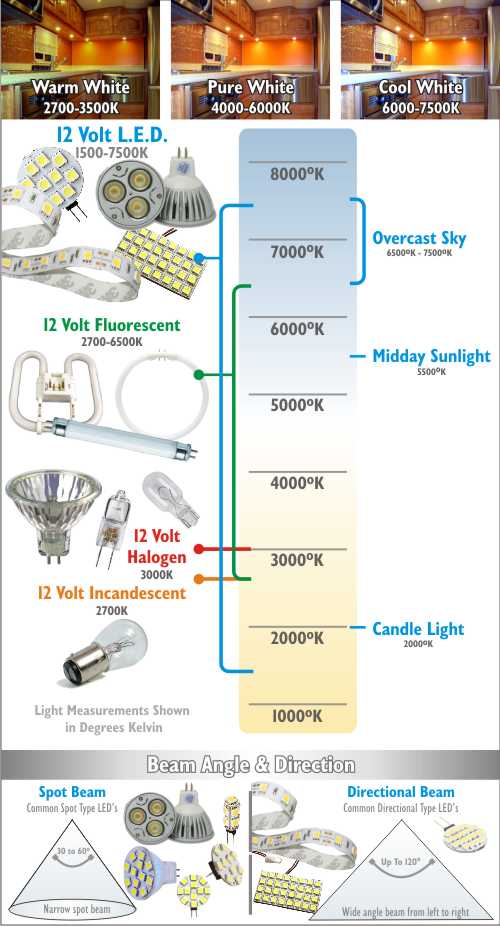Compare LED to Halogen & Incandescent Bulbs - Globes
 Curious about the new LED Lighting appearing in new Caravans and RV's, or, already know a bit about LED technology and are keen to improve the quality of light in your vehicle, or, just want to slash the power draw from your batteries to extend your ability to camp out for longer periods, the fact is that LED lighting is the solution. This article aims to clear some of the confusion that surrounds traditional lighting currently available and provide a helpful guide to evaluating and buying 12 volts LED lighting for Caravans & RV's.
Curious about the new LED Lighting appearing in new Caravans and RV's, or, already know a bit about LED technology and are keen to improve the quality of light in your vehicle, or, just want to slash the power draw from your batteries to extend your ability to camp out for longer periods, the fact is that LED lighting is the solution. This article aims to clear some of the confusion that surrounds traditional lighting currently available and provide a helpful guide to evaluating and buying 12 volts LED lighting for Caravans & RV's.
Power Savings - The lighting we are most familiar with in recreational vehicles are 12v Bulbs, Halogens and Fluoros. 12v Bulbs & Halogens have incandescent filaments that burn (quite literally) and convert their input energy into about 80% heat with the remainder given off as incidental light. Typically incandescent bulbs have a lifespan of about 1000 hours, at which point, having converted your precious battery power into vastly more heat than light, they need to be replaced. Put another way, 3 x 21W lights burning 4 hours will chew 21 Amp Hours from your battery requiring a recharge before next use. Whereas 3 x 2.5W LED bulbs running 4 hours will only use 2.5 Amps, that's 840% less power consumption and LED's can last for up to 50,000 hours.
12v Fluoro's use about twice the power of LED's with a lifespan of about 5000 hours, also Fluoro’s contain toxic mercury vapour and are therefore hazardous waste. Double D Flouro's (D2) is easily replaced with a Triple or Quad Cluster Fitting which will utilize some economical G4 Disc Type LED's. Clearly, LED's are the best answer to limit huge power draws and provide cleaner, brighter lighting longer.
The Colour Temperature - for LEDs is measured in Kelvins ranging from below 2000K which has a yellow tinge, through 4000K which is roughly neutral and going up from there to a bluish hue. In most Caravans and RV's, the need for mood lighting is minimal. Pure to Cool White is most common. Older eyes often see better in cooler colours. Women often prefer warmer colours than men and work area lighting is better if cooler. Cooler whites raise attention, warmer whites soften the environment creating a more relaxed space, but hide the true colour of objects adding a yellowish tint.
The Light Beam Angle from the lamp is another factor to consider. A narrow-angle, of 60 degrees or less will shine all of its light onto a small focused area which will appear very bright. A wider angle, anything from 70 to 120 degrees, will disperse light over a much wider area but because the light is diluted, more will be lit but less brightly.
The brightness of LEDs is measured in Lumens. One lumen is as bright a candle, so, try to choose LEDs with a rated efficiency between 50 to 100 lumen’s per Watt which is currently the highest LED technology available.
12 Volt LED replacements are relatively inexpensive and most conversions can be done D.I.Y. The average Caravan or RV can cost as little as $150.00 to convert to LED.
If you have found this article helpful, Please consider leaving a comment below and or Subscribing to my Mad About LED - Channel, by clicking the YouTube button below.
Comments
Related Blogs
How to Convert a 12 - 24 Volt DC T10 Halogen Light Fitting to L.E.D
This video shows how to easily convert T10 Halogen light fittings found in Caravans, Motorhomes, RVs and Campers. Read More
- 0
- 2 Comments
How Bright Are G4 Disc Type LEDs
I've made this video to visually show how bright G4 Disc Type LEDs actually are. My thinking is that many people just want to see how bright an LED is in an actual setting. Read More
- 0
- 1 Comments



